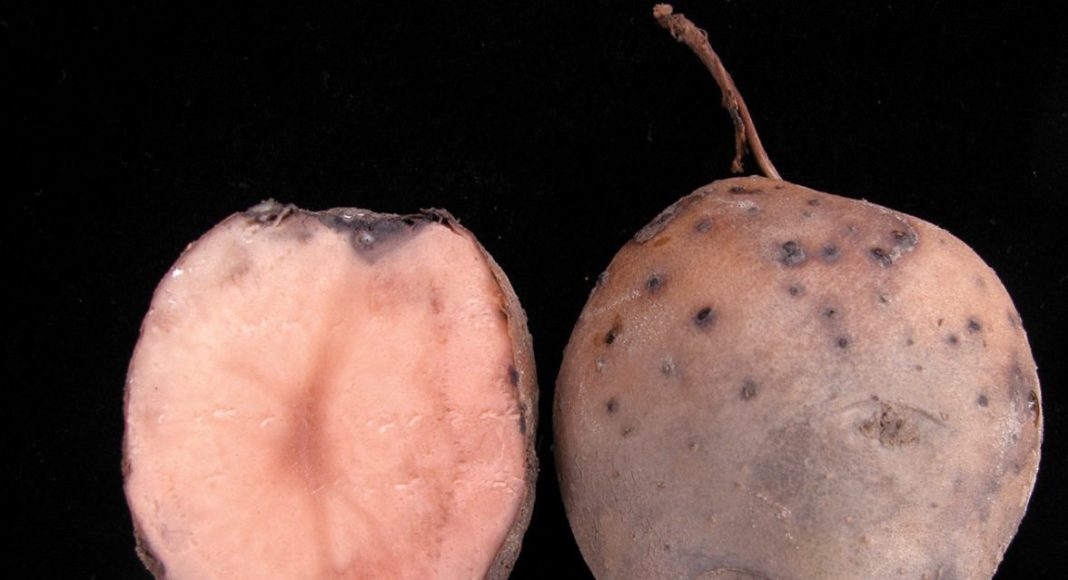Most of you probably know that Orondis Gold Potato fungicide, a co-pack containing Orondis and Ridomil (active ingredients oxathiapiprolin and metalaxyl-M), will be available this spring to suppress pink rot and Pythium leak. The registration is for in-furrow application, but pink rot usually develops at the end of the season. Will Orondis applied mid-May still be active in September?
My colleagues across the border always do a good job evaluating fungicides before they are registered, so I asked two of them. North Dakota State University plant pathologist Neil Gudmestad has done a lot of research on pink rot. He said, yes, Orondis is very effective against pink rot even if applied in-furrow in the spring.
Miller Research’s plant pathologist Jeff Miller agrees. He tested Orondis last year and got very good control, not just suppression, of pink rot at harvest time. Miller will be a guest speaker at the upcoming Ontario Potato Conference on March 6, 2019 — good reason to attend! Also, Miller hopes to present data on the effect of Orondis against Pythium leak.
Now, the not so good news: If you use the Orondis Gold Potato co-pack in-furrow, you cannot use Orondis as a foliar spray against late blight. This is a resistance management strategy to keep single-site fungicides like Orondis effective for an extended period of time.
On another note, time is flying by, and March is just around the corner! It’s time to register for the upcoming Ontario Potato Conference and Trade Show. Guest speaker Andy McGuire, an agricultural systems educator from Washington State University, will talk about increasing organic matter in sandy soil. McGuire is such a good speaker, the University of Guelph decided to “borrow” him for a seminar the day after our conference. I hope to see you all on March 6th!











